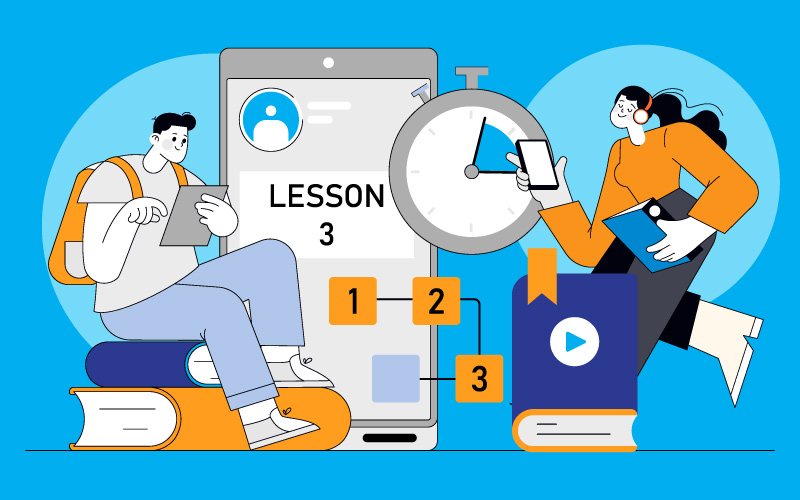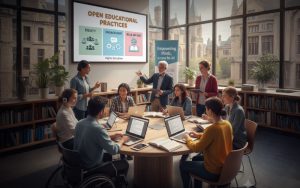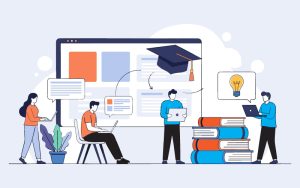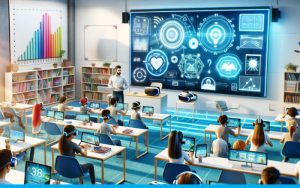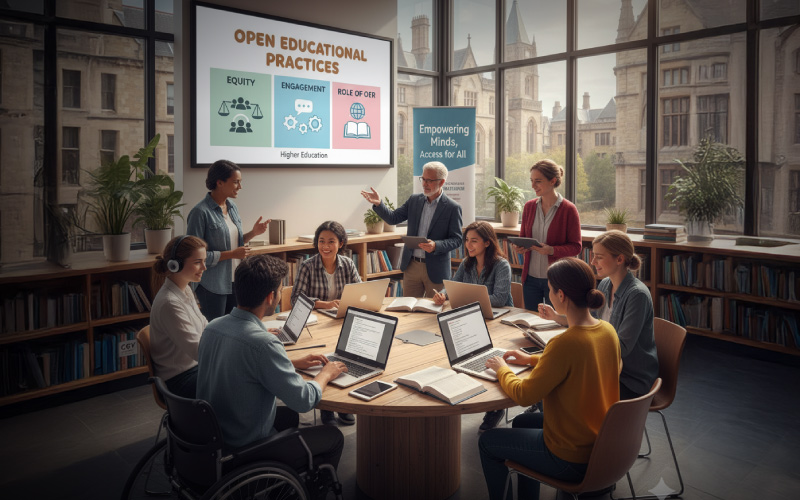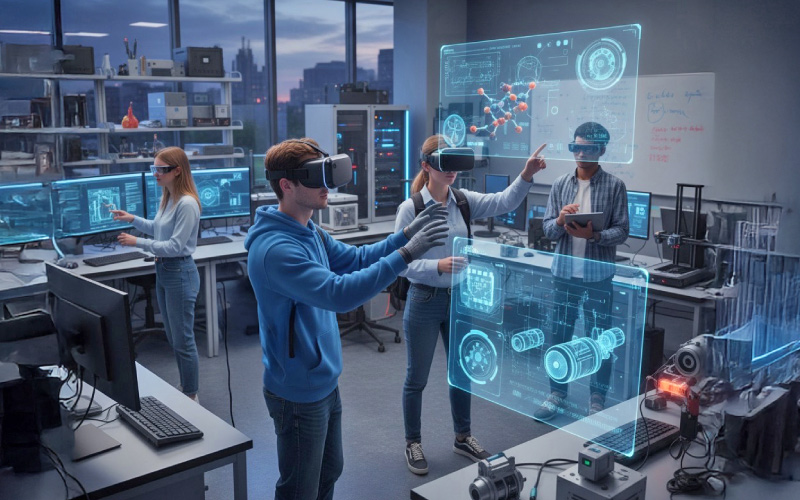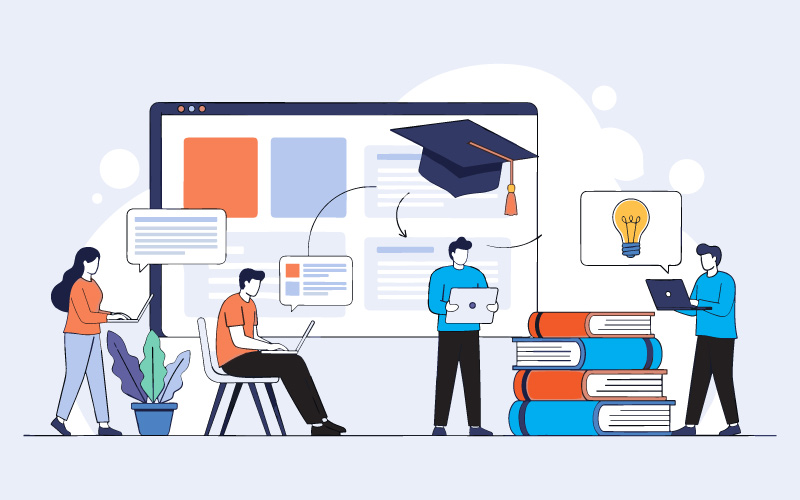The way students learn is changing, and degrees are no longer the only measure of success.
Students now look beyond conventional education models. Learning that feels practical, personal, and fast-moving- no one signs up for long lectures anymore. Learners today chase skills that prove their value on the job and prepare them for what’s next.
That’s why microlearning and verified microcredentials are leading the way. They fit busy schedules, offer visible progress, and build credibility without the wait of conventional timelines.
It’s a smarter, more flexible way to grow- one that’s shaping the future of higher education.
So, let’s break down that shift from microlearning to microcredentials, the rise of stackable programs, and why hybrid education models are setting the new standard for what students want- now and in the years ahead.
What is Microlearning?
Microlearning breaks long lessons into bite-sized, focused modules. Each segment targets specific skills, concepts, or topics with a goal to help students grasp and retain knowledge faster as compared to a structured learning environment.
Students can learn using videos, infographics, interactive sessions, etc., customized as per their curriculum goals, learning stage, and learning gaps. This way, they can balance their work, projects, and continuous learning.
The real advantage here is flexibility, helping students progress at their own pace. They can revise concepts and put those skills to immediate use combining both theoretical and practical learning methods- fitting better to the modern education standards.
But how can students actually know how much they have learnt and progressed? Where is the proof?
This is where microcredentials step in. Let’s take.
What are Microcredentials?
Now that students have learnt a specific skill, they can test their progress through microcredentials– which are short, verified certifications that prove a student’s mastery in specific skills.
These are backed by certain Edtech platforms or universities centered around the skills popular in the industry, like data analytics, AI tools, leadership, or digital marketing. So, instead of waiting years to graduate in a specific stream, students can show their progress in a short period of time.
Students can also stack these skills together, presenting a larger qualification spectrum using multiple degrees and diplomas, creating their own flexible education journey by mixing online courses, bootcamps, workshops, or hybrid programs.
It’s all about how learning can be turned into visible value.
That shift from learning for grades to learning for growth is shaping how education works now.
And this is where the real impact is- here; students experience skill-first learning backed by microcredentials that fit the real world.
The Rise of Flexible, Skills-First Learning
The growing demand of skills over knowledge is proof that microlearning and microcredentials are not just trends- but they are here to stay. They’re shifting the balance of power in education, sustaining the demand of students who want learning that adapts to them, not the other way around.
A Coursera report showed that enrollment in short online courses grew by over 40% last year, while full-time degree programs dropped by 15% and have been growing since then.
The reason is very simple- more flexibility. Students are now learning skills that are stackable, creating a portfolio that helps them land jobs faster, valuing their skills over what they have studied.
Universities are catching up too- they are now open to hybrid programs, online classes, part-time on campus classes, catering towards flexibility.
Students can attend Python lectures on Monday, take up a workshop on Thursday, and get certified by the end of the week- making education accommodating and not stressful.
And that’s where stackable credentials are rewriting the rules.
That’s the what and how- but having the tools is not enough to achieve the desired goal.
How Students Can Maximize These Formats
It is simple, stacking works better when balanced. All the microlearning, microcredentials, and hybrid programs work best when placed strategically in the right order.
Picking up modules that matter- Defining career goals and matching the necessary skills by assessing the latest trends and personal learning gaps with a mix of soft skills, tech and leadership can build a resourceful portfolio.
Stacking credentials as per the roadmap- Acquiring every badge is not necessary. Combining the once that complements the career goal will prove to be more valuable than choosing quantity over quality.
Leveraging hybrid schedules- Blending online courses with workshops, live sessions, or weekend bootcamps can help gain knowledge immediately, making skills stick faster than passive learning.
Showcasing progress- Building a portfolio, updating LinkedIn, and showcasing digital badges can build up more tangible outcomes from short-term learning and proving credibility faster than waiting for traditional degrees.
Smart stacking, balanced pacing, and visible proof- this is how students turn learning into career impact, flexibility, and growth.
From Microlearning to Microcredentials- The Future is Flexible
Education is no longer confined to a few fixed paths. As the world evolves, roles are diversifying- and so is the way students learn.
Students are now designing their own learning paths and building everything around their schedule, creating better opportunities for themselves.
In short, the future favors those who adapt, experiment, and showcase their growth- because education is no longer just what they study, it’s what they can do with it.
FAQ's
Why is accessibility essential to STEM education for students with special needs?
Accessibility to STEM eLearning means that all students (of both genders and with special needs) get to be partakers of learning programs. It's a step towards eliminating educational inequalities and fostering multiverse innovation.
In STEM education, what are some common problems encountered by students with special needs?
Some common issues are course format that is not complex, non-adapted labs and visuals, insufficient assistive technologies, and no customized learning resources. Besides this, systemic issues such as learning materials that are not inclusive, and teachers who are not trained.
How can accessibility be improved in STEM eLearning through Universal Design for Learning (UDL)?
Through flexible teaching and assessment methods, UDL improves accessibility in STEM content. Also, UDL allows learners to access and engage content in multiple ways and demonstrate understanding of content.
What are effective multisensory learning strategies for accessible STEM education?
Examples of multisensory learning strategies in accessible STEM include when students use graphs with alt-text, auditory descriptions of course materials, tactile models for visual learners through touch, captioned videos for auditory learners, and interactive simulations to allow boys and girls choice in how they have access to physical, visual, auditory, video and written content representation.
Identify the assistive technologies required for providing accessible STEM material?
In order to provide access to STEM material, technologies like screen readers, specially designed input app for mathematics, braille displays, accessible graphing calculators are required.
How can STEM educators approach designing assessments for students with special needs?
To create content for students with special needs, tactics such as creating adaptive learning pathways in more than one format, oral and project assessments and multiway feedback will prove to be beneficial.
What is the role of schools and policymakers in supporting accessible STEM education?
Educational institutions should focus on educating trainers and support staff, also they can invest in assistive technology, and work towards curricular policies.
Can you share examples of successful accessible STEM education initiatives?
Initiatives like PhET Interactive Simulations, Khan Academy accessible learning resources, Labster virtual laboratory simulations, and Girls Who Code’s outreach are examples of effective practice.
How can Mitr Media assist in creating accessible STEM educational content?
Mitr Media is focused on designing and building inclusive e-learning platforms and multimedia materials with accessibility standards in mind so that STEM material is usable by all learners at different levels of need.
What value does partner with Mitr Media bring to institutions aiming for inclusive STEM education?
Mitr Media has expertise in implementing assistive technology, enacting Universal Design for Learning, and providing ongoing support to transformation organizations, enabling their STEM curriculum into an accessible and interesting learning experience.
- Unnati Umarehttps://www.mitrmedia.com/resources/blogs/author/unnati_u/
- Unnati Umarehttps://www.mitrmedia.com/resources/blogs/author/unnati_u/
- Unnati Umarehttps://www.mitrmedia.com/resources/blogs/author/unnati_u/
- Unnati Umarehttps://www.mitrmedia.com/resources/blogs/author/unnati_u/


